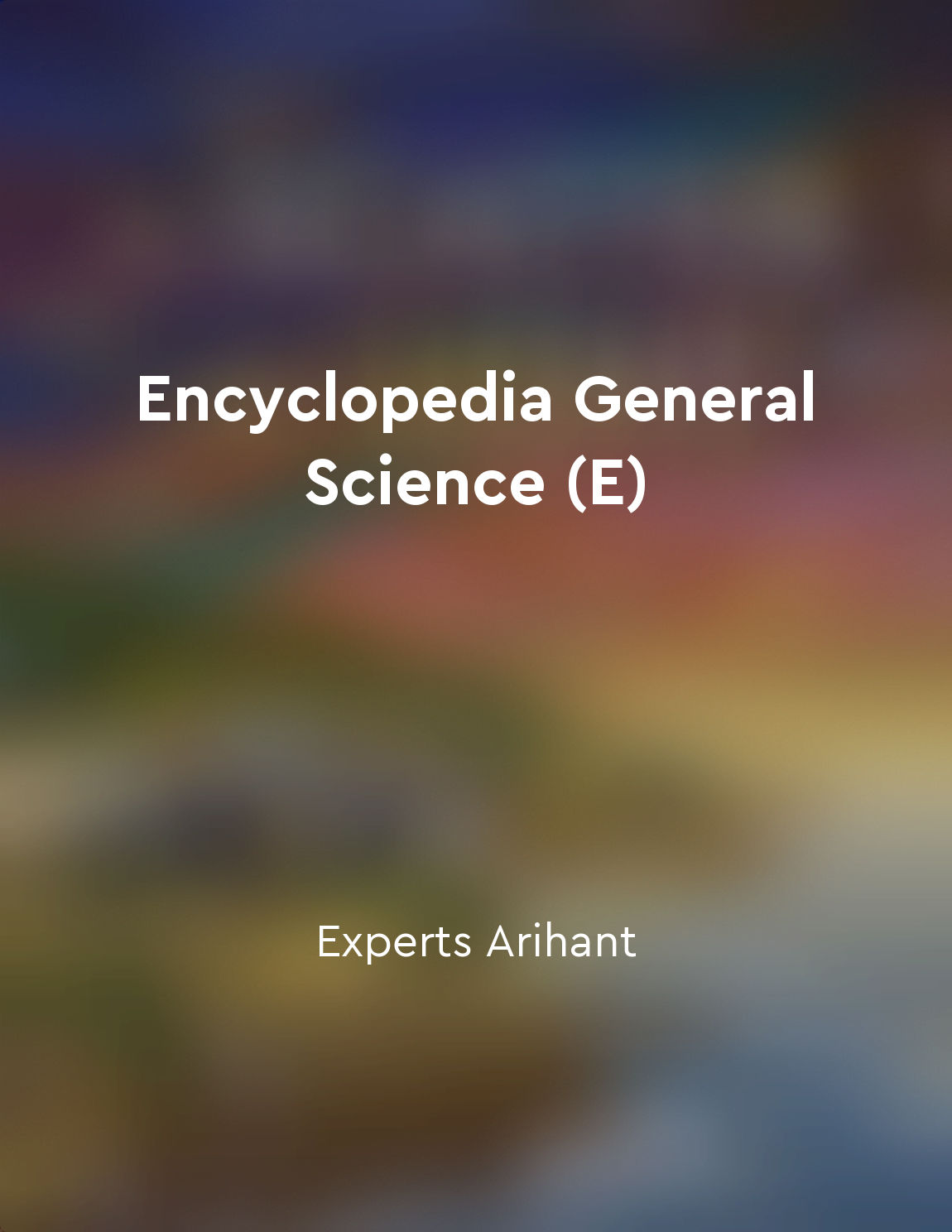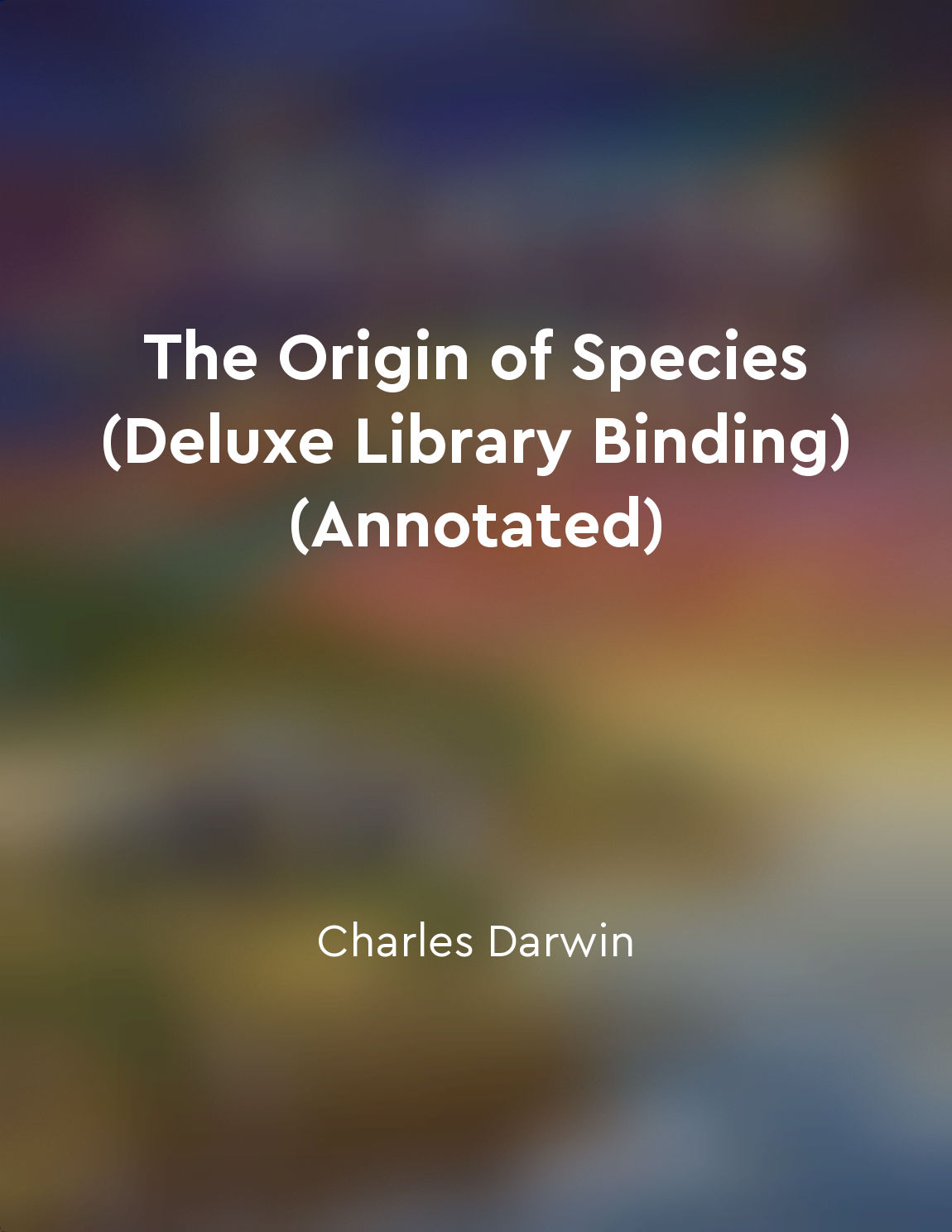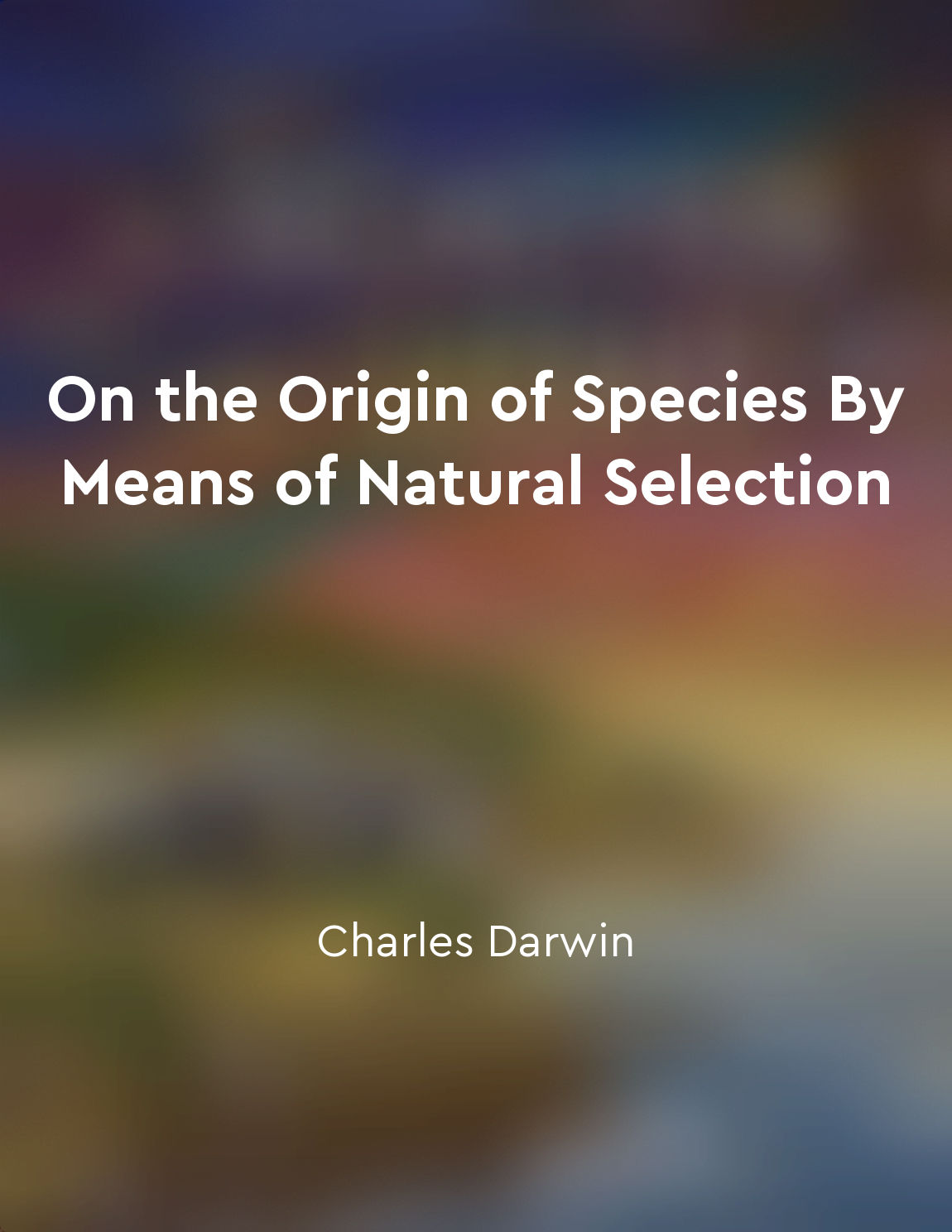Behavior and communication in animals from "summary" of Biology by Neil A. Campbell
Behavior and communication in animals refer to the ways in which organisms interact with each other and their environment. Animals exhibit a wide range of behaviors, such as mating rituals, foraging for food, and defending their territory. These behaviors are often shaped by natural selection and play a crucial role in the survival and reproduction of the organism. Communication in animals involves the transmission of signals between individuals, which can be visual, auditory, olfactory, or tactile. These signals convey information about the animal's intentions, emotions, or territorial boundaries. For example, birds may use songs to attract mates or defend their territory, while bees perform elaborate dances to communicate the location of food sources. Behavior and communication in animals are highly adaptive and can vary greatly between species. Some behaviors are innate and genetically programmed, while others are learned through experience. For example, migratory birds exhibit complex navigation skills that are thought to be genetically inherited, while primates learn social behaviors through observation and imitation. In studying behavior and communication in animals, scientists use a variety of methods, including field observations, experiments, and genetic analyses. Through these approaches, researchers can gain insights into the ecological and evolutionary significance of different behaviors, as well as the underlying mechanisms that drive them.- The study of behavior and communication in animals provides valuable insights into the complex and diverse ways in which organisms interact with each other and their environment. By understanding these behaviors, scientists can better appreciate the diversity of life on Earth and the intricate relationships that exist within ecosystems.
Similar Posts
Emphasize the importance of timing in training
Timing is crucial in training animals. If you want to teach a dog to sit, for example, you must give the command "Sit" at the e...
Human creativity is driven by instinctual impulses
Human creativity is a remarkable aspect of our species, one that sets us apart from all others on this planet. It is the force ...

Biology is the study of living organisms and their interactions
Biology, as a scientific discipline, delves into the intricate world of living organisms. It seeks to unravel the mysteries beh...
The tree of life illustrates the interconnectedness of all living things
The tree of life is a powerful metaphor that represents the interconnectedness of all living things on Earth. Just as the branc...

The impact of climate change on animal populations
Climate change is messing with the animals. It’s confusing them. Throwing off their schedules. Forcing them to migrate to survi...

Darwin's theory revolutionizes scientific understanding
Charles Darwin's theory of evolution by natural selection has had a profound impact on scientific thought since its publication...

OSix's story highlighted the complexities of wildlife management
OSix's story in 'American Wolf' laid bare the intricate web of challenges involved in managing wildlife populations. The delica...

Gradualism in evolutionary processes
The process of evolution, as observed in the natural world, is characterized by a gradual change over time. This gradualism is ...
Friendliness is an adaptive trait
Friendliness is not just a nice quality to have; it is a fundamental aspect of our survival as a species. When we think of surv...


